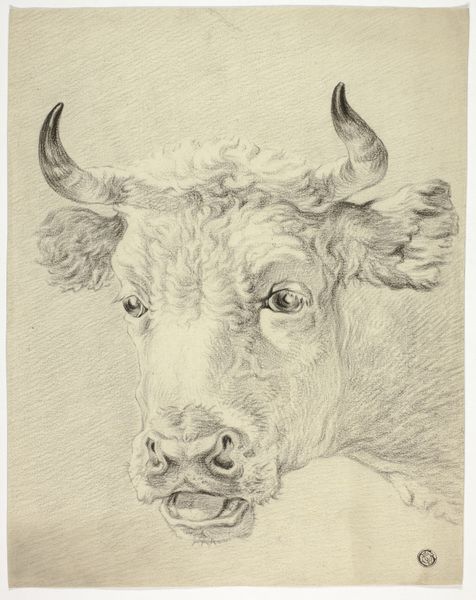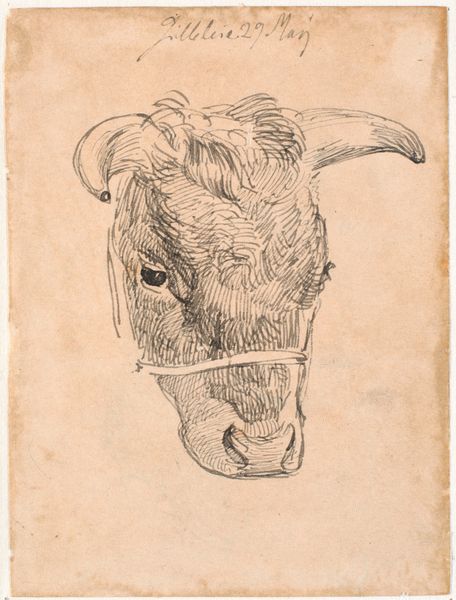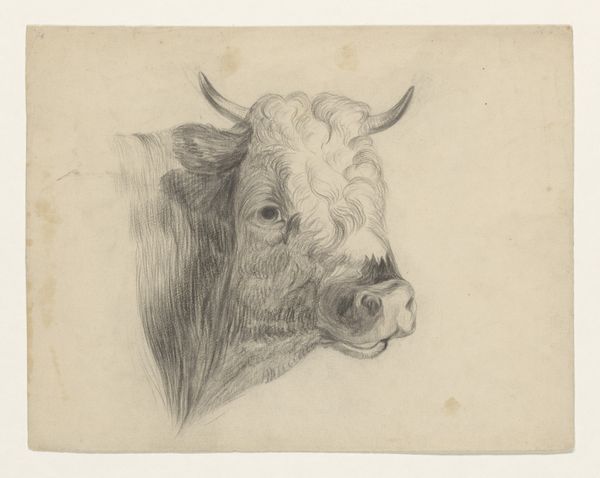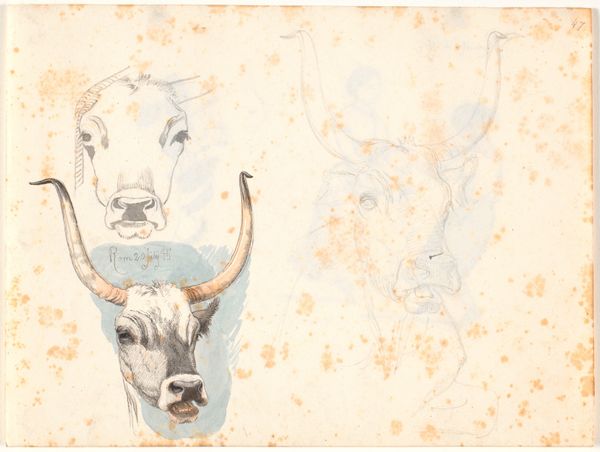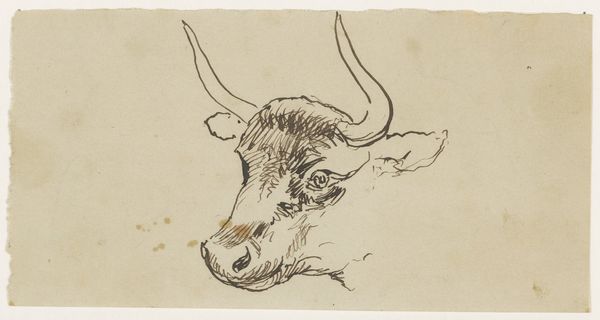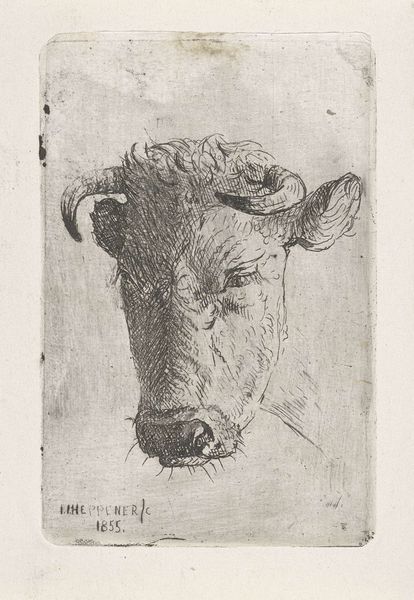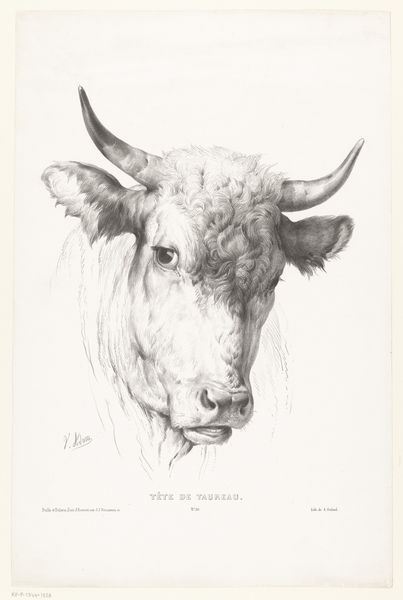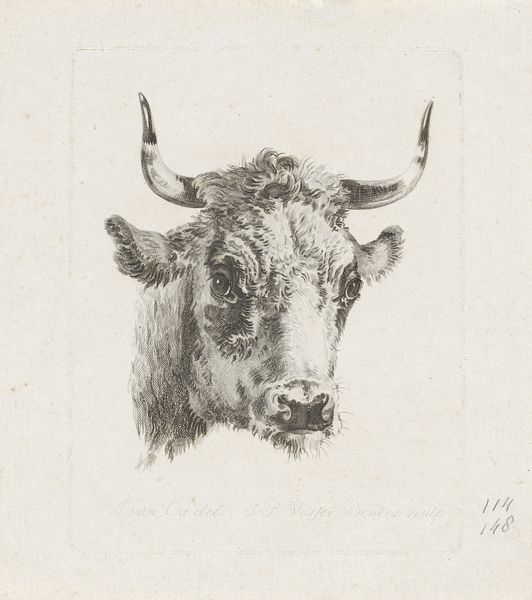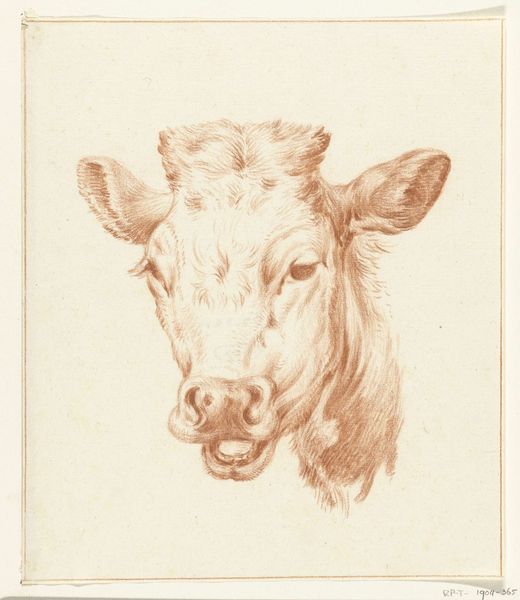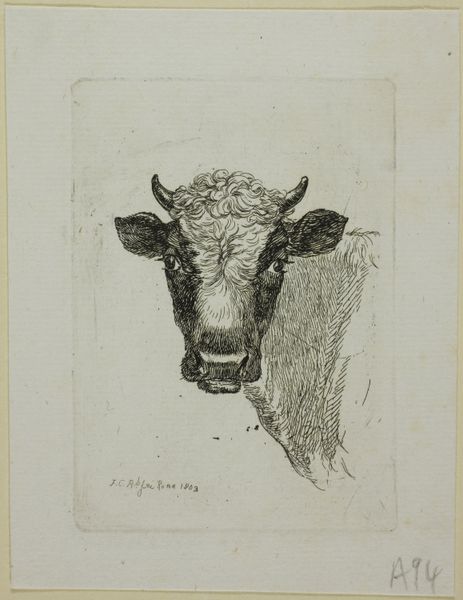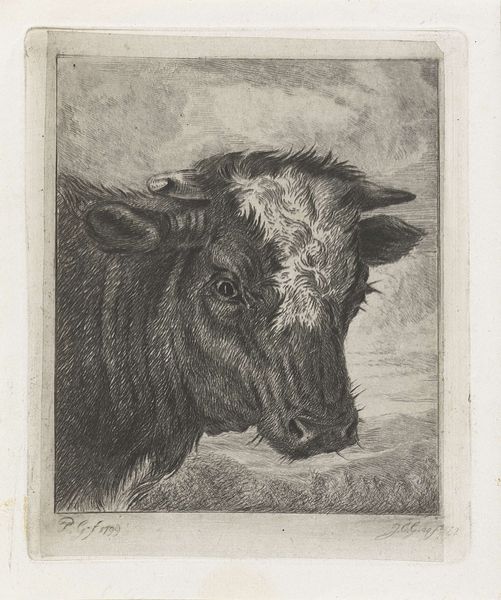
Dimensions: 107 mm (height) x 122 mm (width) (bladmaal)
Curator: This intriguing piece is "Minotauros' hoved," or "Head of the Minotaur," attributed to Nicolai Abildgaard, and thought to have been created sometime between 1743 and 1809. It’s currently part of the collection at the SMK, the Statens Museum for Kunst. Abildgaard rendered it in watercolor, a medium lending itself well to the subject’s ethereal and unsettling nature. Editor: Whoa. The expression on that minotaur... It’s not raging. It's almost…melancholy? Like it just remembered it left the oven on back in the labyrinth. Curator: That’s a compelling interpretation. It subverts the common representation of the minotaur as a purely savage beast. Abildgaard, influenced by Romanticism and Neo-Classicism, was fascinated by classical mythology, often exploring the psychological states of figures in transition or conflict. Editor: Definitely feeling that inner turmoil vibe. It’s the eyes, man. They're wide and almost…vulnerable. Like a puppy who’s just realized it’s been very, very bad. The watercolor, that kind of hazy wash, it adds to that dreamlike, slightly unsettling atmosphere. Curator: The use of watercolor aligns with Romantic ideals that emphasized feeling and the sublime. The minotaur, caught between beast and man, perfectly encapsulates that exploration of dualities that Romanticism revels in. The light washes, almost like a faded memory, invite us to project our own emotions onto the figure. The Minotaur serves as a powerful symbol, questioning where the animal ends and where humanity begins, particularly relevant when looking at how humanity viewed "monsters" both mythical and all too real throughout history. Editor: And he looks so huggable, despite being half-bull. Makes you wonder about the nature of monsters, right? Are they born that way or made? Deep thoughts for a Tuesday afternoon. This watercolor seems to imply the "monster" has complex and maybe even unhappy emotions! Curator: It speaks to the historical use of mythology to consider what constitutes humanity, and it definitely complicates a one-dimensional interpretation of a "monster" in society. Editor: Well, I came in expecting rage and got existential angst. That’s art, right? Changing perspectives, making you think about what’s under the surface. Curator: Indeed. And considering how mythologies are mobilized to classify different populations, perhaps art like Abildgaard's compels us to consider more compassionate views.
Comments
No comments
Be the first to comment and join the conversation on the ultimate creative platform.

